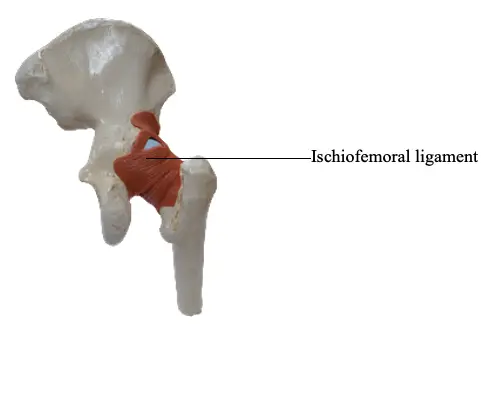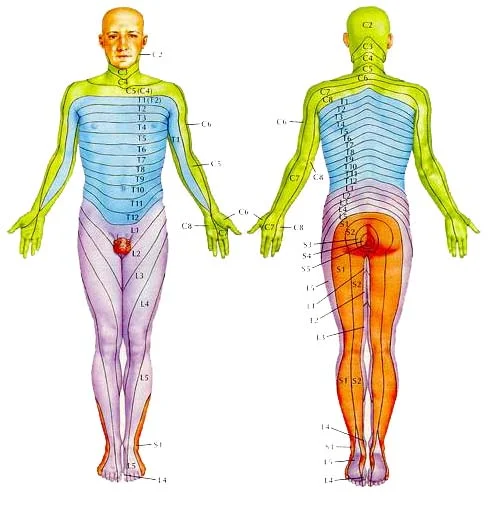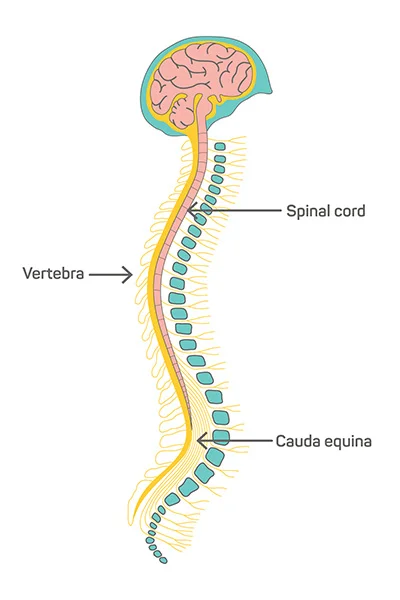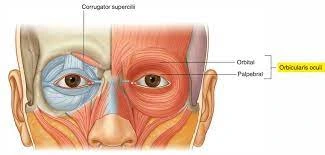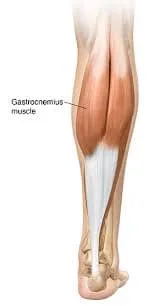Ischiofemoral Ligament
Table of Contents
Introduction
The ischiofemoral ligament is a strong band of fibrous tissue that connects the ischium (a bone in the pelvis) to the femur (the thigh bone). It is one of the three major ligaments that stabilize the hip joint. The ischiofemoral ligament runs from the ischial tuberosity (a bony prominence on the ischium) to the greater trochanter (a bony protrusion on the femur).
Its main function is to limit excessive extension and external rotation of the hip joint. It also helps to maintain the position of the femoral head (the ball-shaped end of the femur) within the acetabulum (the socket of the hip joint). Dysfunction or injury to the ischiofemoral ligament can result in hip pain, instability, and reduced range of motion.
Structure of the ischiofemoral ligament
The ischiofemoral ligament is a dense, fibrous band of tissue that is composed primarily of collagen fibers. These fibers are arranged in a parallel fashion, giving the ligament its strength and resistance to stretching.
The ligament has two main parts: the superior fibers and the inferior fibers. The superior fibers originate from the ischial tuberosity and run obliquely downward and laterally to attach to the greater trochanter of the femur. The inferior fibers originate from the ischial tuberosity as well, but run more vertically and attach to the femur slightly lower than the superior fibers.
The ischiofemoral ligament is thickest at its origin on the ischial tuberosity and gradually tapers as it approaches its insertion on the femur. It is also wider at its insertion on the greater trochanter than at its origin.
The ligament is covered by a synovial membrane, which produces synovial fluid to lubricate and nourish the ligament. This helps to reduce friction between the ligament and surrounding tissues during the movement of the hip joint.
In general, the structure of the ischiofemoral ligament allows it to provide stability to the hip joint while still allowing for a degree of flexibility and movement.
Function of the ischiofemoral ligament
The ischiofemoral ligament serves several important purposes in the hip joint.
Firstly, it provides stability to the joint by limiting excessive movement of the femur in relation to the pelvis. This is especially important during activities that involve weight-bearing or forceful movements, such as running or jumping. Without the ischiofemoral ligament, the femur could potentially dislocate or move out of its normal position, leading to pain and dysfunction in the hip joint.
Secondly, the ligament helps to distribute forces and stresses across the joint, reducing the risk of injury or damage to the surrounding tissues. This is particularly important during activities that involve repetitive or high-impact movements, such as sports or manual labor.
Thirdly, the ischiofemoral ligament plays a role in maintaining proper alignment of the hip joint. If the ligament becomes weakened or damaged, it can lead to abnormal movements or positioning of the femur, which can cause pain and dysfunction in the hip joint.
In conclusion, we can say that the ischiofemoral ligament is an important structure that helps to support and stabilize the hip joint, allowing for optimal function and movement.
Blood supply of the ischiofemoral ligament
The ischiofemoral ligament gets its blood supply through several sources. One of the main sources is the medial circumflex femoral artery, which branches off of the deep femoral artery. This artery runs along the posterior aspect of the hip joint and supplies blood to the ischiofemoral ligament as well as other structures in the area.
In addition to the medial circumflex femoral artery, the ischiofemoral ligament also receives blood supply from branches of the inferior gluteal artery and the obturator artery. These arteries provide additional support to the ligament and help to ensure that it remains healthy and functional.
The blood supply to the ischiofemoral ligament is important for several reasons. Firstly, it helps to ensure that the ligament remains strong and healthy, which is important for maintaining stability and function in the hip joint. Secondly, a healthy blood supply can help to promote healing and recovery in the event of an injury or damage to the ligament. Finally, a good blood supply can help to prevent conditions such as ischemia or necrosis, which can occur when tissues do not receive enough oxygen and nutrients.
Symptoms of the ischiofemoral ligament
Symptoms of ischiofemoral ligament injuries can vary depending on the severity of the injury. However, some common symptoms include:
- Hip Pain: Pain is the most common symptom of an ischiofemoral ligament injury. The pain may be felt in the hip, groin, or buttocks and may worsen with activity.
- Stiffness: Stiffness in the hip joint may occur due to a limited range of motion caused by the injury.
- Weakness: Weakness in the hip joint may occur due to the inability to bear weight or perform certain movements.
- Swelling: Swelling may occur around the hip joint due to inflammation caused by the injury.
- Bruising: Bruising may occur around the hip joint due to trauma or injury to the area.
- Clicking or popping: Clicking or popping sounds may be heard when moving the hip joint due to damage to the ligament.
- Instability: Instability in the hip joint may occur due to a partial or complete tear of the ischiofemoral ligament.
It is very crucial to take a proper medical diagnosis if any of these symptoms occur, as untreated injuries can lead to long-term complications and chronic pain. Treatment options may include rest, physical therapy, pain management, and in severe cases, surgery.
Injuries of the ischiofemoral ligament
The ischiofemoral ligament is a strong band of connective tissue that connects the ischium bone of the pelvis to the femur bone in the thigh. It plays an important role in stabilizing the hip joint and allowing for smooth movement of the leg. However, certain activities can put excessive stress on the ischiofemoral ligament, leading to injury or damage. Here are some activities that can affect the ischiofemoral ligament:
- Running: Running is a high-impact activity that involves repetitive motion of the hip joint. This can put a lot of stress on the ischiofemoral ligament, leading to strain or tearing.
- Jumping: Jumping activities such as basketball, volleyball, or gymnastics can put significant stress on the hip joint and ischiofemoral ligament. Landing from a jump can also cause trauma to the ligament.
- Twisting: Activities that involve twisting or rotating the hip joint, such as dancing or martial arts, can cause strain on the ischiofemoral ligament.
- Sitting for long periods: Prolonged sitting can cause tightness and stiffness in the hip joint, which can lead to strain on the ischiofemoral ligament.
- Overuse: Overuse of the hip joint, such as performing repetitive motions at work or during sports, can lead to inflammation and damage to the ischiofemoral ligament.
It is very essential to take precautions when engaging in these activities, such as warming up properly, using proper techniques, and taking breaks as needed. If you experience pain or discomfort in the hip joint during or after these activities, it is important to take medical treatment in order to prevent further injury.
Treatment of the ischiofemoral ligament
Conservative treatment
Conservative treatment of the ischiofemoral ligament typically involves non-surgical methods to manage pain and promote healing. Here are some common conservative treatments:
Rest: Resting the affected hip joint and avoiding activities that aggravate the ligament can help reduce pain and inflammation.
Ice and heat therapy: Applying ice to the affected area for 20 minutes at a time, several times a day, can help reduce pain and swelling. Heat therapy, such as using a heating pad or taking a warm bath, can help relax muscles and increase blood flow to the affected area.
Physical therapy: A physical therapist can develop a customized exercise program to help strengthen the muscles around the hip joint and improve flexibility. This can help reduce strain on the ischiofemoral ligament and promote healing.
Medications: Over-the-counter pain relievers, can be helpful in managing pain and reducing inflammation. In some cases, a doctor may prescribe stronger medications or corticosteroid injections to manage pain and inflammation.
Lifestyle modifications: Making lifestyle changes such as losing weight, improving posture, and avoiding prolonged sitting can help reduce strain on the hip joint and promote healing.
Conservative treatment can take several weeks or months to be effective, depending on the severity of the injury. It is important to follow the treatment plan recommended by your healthcare provider and avoid activities that aggravate the injury. If conservative treatment does not improve symptoms, surgery may be necessary.
Physiotherapy treatment
Physiotherapy treatment of the ischiofemoral ligament typically involves a combination of exercises and manual therapy techniques to help reduce pain, improve flexibility, and promote healing. Here are some common physiotherapy treatments for the ischiofemoral ligament:

Stretching exercises: A physiotherapist may recommend stretching exercises to help improve flexibility in the hip joint and reduce strain on the ischiofemoral ligament. These exercises may include hamstring stretches, quadriceps stretches, and hip flexor stretches.
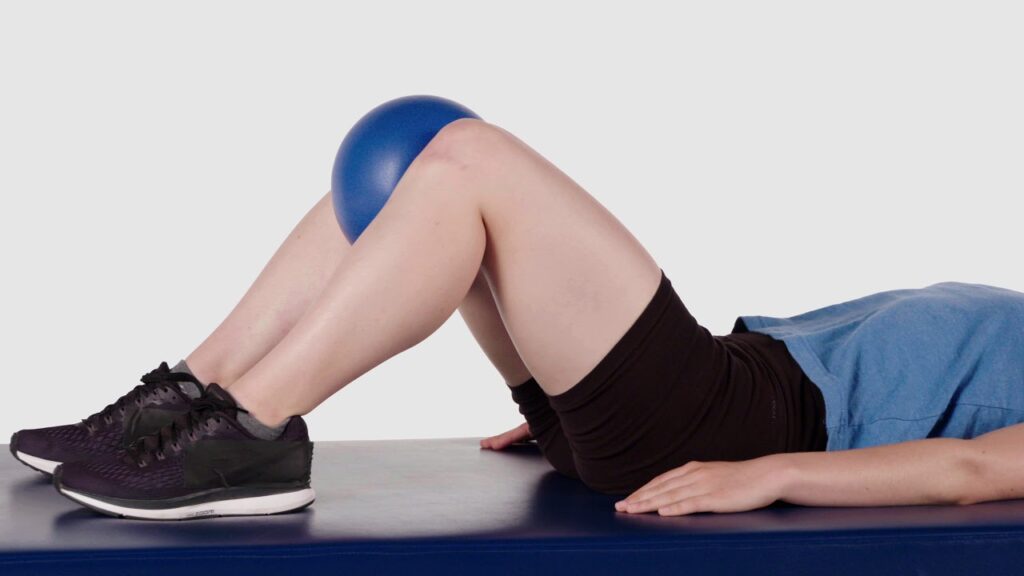
Strengthening exercises: Strengthening exercises can help improve the stability of the hip joint and reduce strain on the ischiofemoral ligament. These exercises may include hip abductor exercises, hip adductor exercises, and gluteal strengthening exercises.
Manual therapy: A physiotherapist may use manual therapy techniques such as massage, joint mobilization, and soft tissue manipulation to help reduce pain and improve the range of motion in the hip joint.
Electrical stimulation: Electrical stimulation may be used to help reduce pain and improve muscle function in the hip joint.
Ultrasound therapy: Ultrasound therapy uses high-frequency sound waves to help reduce inflammation and promote healing in the affected area.
Taping or bracing: Taping or bracing may be used to provide support to the hip joint and reduce strain on the ischiofemoral ligament during physical activity.
Education and advice: A physiotherapist can provide education and advice on proper posture, body mechanics, and activities to avoid or modify to help reduce strain on the hip joint and promote healing.
So in the end we can say that physiotherapy treatment for the ischiofemoral ligament is focused on reducing pain, improving flexibility and strength, and promoting healing through a combination of exercises and manual therapy techniques. It is important to follow the treatment plan recommended by your physiotherapist and avoid activities that aggravate the injury.
Risk factors of the ischiofemoral ligament
The ischiofemoral ligament is a strong band of connective tissue that connects the ischium bone of the pelvis to the femur bone in the thigh. It provides stability to the hip joint and helps to prevent excessive movement of the femur bone. However, certain factors can increase the risk of injury to the ischiofemoral ligament. These risk factors include:
- Overuse: Repetitive activities such as running, jumping, or kicking can put excessive strain on the ischiofemoral ligament, leading to injury.
- Poor posture: Poor posture can place undue stress on the hip joint, causing strain on the ischiofemoral ligament.
- Weak muscles: Weakness in the muscles surrounding the hip joint, such as the glutes, hamstrings, and hip adductors, can lead to increased stress on the ischiofemoral ligament.
- Tight muscles: Tightness in the muscles surrounding the hip joint, such as the hip flexors and quadriceps, can also increase stress on the ischiofemoral ligament.
- Previous injury: A history of previous injuries to the hip joint or surrounding muscles and ligaments can increase the risk of further injury to the ischiofemoral ligament.
- Age: As we age, our connective tissues become less elastic and more prone to injury, increasing the risk of injury to the ischiofemoral ligament.
- Genetics: Some people may be genetically predisposed to certain musculoskeletal conditions that increase their risk of developing ischiofemoral ligament injuries.
It is very essential to take in mind these risk factors through proper training, stretching, and strengthening exercises to reduce the risk of injury to the ischiofemoral ligament. A physiotherapist can help develop a personalized treatment plan to address any underlying risk factors and prevent further injury.
How to reduce risk factors of the ischiofemoral ligament
Reducing the risk of injury to the ischiofemoral ligament involves addressing the underlying risk factors. Here are some ways to reduce the risk of ischiofemoral ligament injury:
- Proper training: Engage in proper training programs that include a variety of exercises to strengthen the muscles surrounding the hip joint, including the glutes, hamstrings, and hip adductors. This will help to distribute the load evenly across the hip joint, reducing stress on the ischiofemoral ligament.
- Stretching: Perform regular stretching exercises to maintain flexibility in the muscles surrounding the hip joint, including the hip flexors and quadriceps. This will help to reduce tension in these muscles and prevent excessive stress on the ischiofemoral ligament.
- Good posture: Maintaining good posture throughout the whole day, especially during sitting or standing for long time periods. This will help to reduce stress on the hip joint and prevent strain on the ischiofemoral ligament.
- Rest and recovery: Allow for adequate rest and recovery time between workouts to prevent overuse injuries. This will give your body time to recover and repair any damage to the ischiofemoral ligament or surrounding muscles.
- Gradual progression: Gradually increase the intensity and duration of your workouts to avoid sudden increases in stress on the hip joint. This will help to prevent overuse injuries and reduce the risk of ischiofemoral ligament injury.
- Seek professional help: Consult with a physiotherapist or sports medicine specialist to develop a personalized treatment plan that addresses any underlying risk factors and helps to prevent further injury to the ischiofemoral ligament.
By knowing these risk factors, you can reduce the risk of ischiofemoral ligament injury and maintain optimal hip joint health.
FAQ
The ischiofemoral ligament is a band of strong connective tissue that connects the ischium (part of the pelvis) to the femur (thigh bone) and helps to stabilize the hip joint.
Symptoms of an ischiofemoral ligament injury may include pain in the hip or buttock area, stiffness, weakness, and difficulty moving the hip joint.
Ischiofemoral ligament injuries can be caused by overuse, trauma, or underlying conditions such as hip dysplasia or arthritis.
An ischiofemoral ligament injury can be diagnosed through a physical exam, imaging tests such as X-rays or MRI, and sometimes through diagnostic injections.
Treatment for an ischiofemoral ligament injury may include rest, ice, compression, and elevation (RICE), physical therapy, anti-inflammatory medication, and in severe cases, surgery.
Yes, an ischiofemoral ligament injury can be prevented by addressing underlying risk factors such as poor training techniques, muscle imbalances, and overuse. Maintaining good posture and gradually increasing the intensity of workouts can also help to prevent injury.

